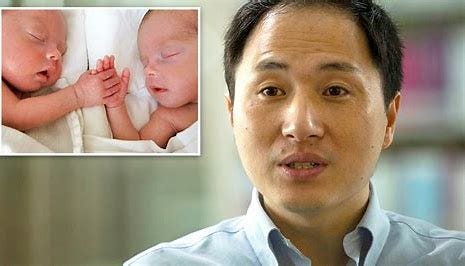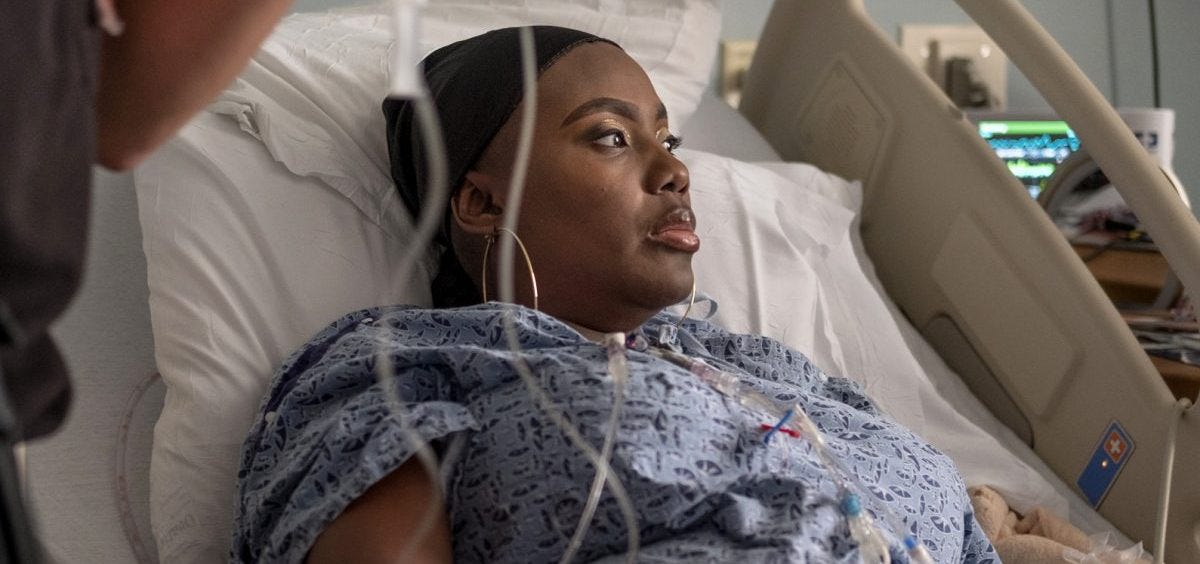“The most disturbing question in science today remains unanswered: Are the first genetically modified babies okay?” – El Pais news.

It was in 2018, that Chinese scientist He Jiankui stunned the world by announcing he had “produced” genetically edited twin girls by using CRISPR to engineer human embryos.
The babies had been born a year previously, which means they must now be between 5 and 6 years old. They are known only by the pseudonyms, Lulu and Nana. Their mother is known as “P6”. It was later reported that a third girl had been born to a different mother, but nothing at all is known about her; at least not outside of a small, elite circle in China.
Under the guise of protecting their privacy and allowing them to lead lives that are as “normal” as possible, the children remain a mystery to this day. Something that drives the international scientific community crazy. Do they really even exist? If so, are they healthy? And even if they are, how could they ever be called “normal”. As far as we know, they are the first of a new “breed” of humans. Their creation is one of the most ethically controversial and potentially dangerous procedures to have ever been undertaken by the scientific community.
No one knows the long-term consequences of altering human genes which can then be passed down to further generations. Yes, the technique has the potential to heal some diseases, just as they claim with mRNA technology. But so far, that claim has not produced many results, and has proved so expensive as to be out of reach of all but the wealthiest class. Treatment for a rare blood disease, for example, costs $3.5 million per patient. Add to that the temptation to create “designer babies”, and you’ve got a real mess on your hands.
He Jiankui was waiting for the perfect moment to announce his achievement to the scientific world, thinking it would make him a hero. Okay, yes, what he’d done was controversial, but nothing great is ever achieved without risk. Surely, once people realized the outcome, they would forgive him a few ethical slip-ups.
But then, Antonio Regalado of MIT Technology Review outed him in an article just two days before the 2018 International Summit on Genome Editing in Hong Kong, which Dr. He was attending. Here’s an excerpt from the article:
According to Chinese medical documents posted online this month (here and here), a team at the Southern University of Science and Technology, in Shenzhen, has been recruiting couples in an effort to create the first gene-edited babies. They planned to eliminate a gene called CCR5 in hopes of rendering the offspring resistant to HIV, smallpox, and cholera.
The clinical trial documents describe a study in which CRISPR is employed to modify human embryos before they are transferred into women’s uteruses.
The scientist behind the effort, He Jiankui, did not reply to a list of questions about whether the undertaking had produced a live birth. Reached by telephone, he declined to comment.
However, data submitted as part of the trial listing shows that genetic tests have been carried out on fetuses as late as 24 weeks, or six months. It’s not known if those pregnancies were terminated, carried to term, or are ongoing.
Dr. He had no choice but to go public with the news about the successful births of Lulu and Nana. Later, he released a promotional video about his project that you can view below.
Dr. He made his goals plain:
“In this ever more competitive global pursuit of applications for gene editing, we hope to be a stand-out.” Dr. He and his team predicted their innovation “will surpass” the invention of in vitro fertilization, whose developer was awarded a Nobel Prize in 2010.
Ah, the Nobel Prize! Surely, surely, Dr. He would soon be standing on that stage, humbly saying, “Oh, it was nothing, any dedicated scientist would have done the same,” as he collected his flashy award.
Far from being embraced by the scientific community as he had hoped, Dr. He was vilified. He was called China’s Dr. Frankenstein. Kiran Musunuru, an expert in gene editing, said He’s work is “as serious as the war crimes committed by Nazi doctors during World War II.” (El Pais)
Dr. He had been aware of the risks. It was said that at least one of the two altered embryos had contained unwanted errors (mutations) that could be carried on to further generations. With what outcome? No one could be sure. Yet, Dr. He had still continued the procedure.
In 2019, Dr. He was sentenced to three years in prison by a Chinese court, along with two of his collaborators. This seems like a slap on the wrist, as if the Chinese government had felt it necessary to make an example of him as a matter of etiquette. Dr. He’s experiments had required connections that went into the highest echelons of China’s government and academia. No one had objected or tried to stop him.
Dr. He was released from prison a few months ago and wasted no time in forming a non-profit organization, the Rare Disease Research Institute. Now, I know all about forming nonprofits. I formed one back in the late 1990s that is still operating today. It took me over a year to jump through all the hoops required to form the nonprofit, and that was with the pro bono help of one of the biggest law firms in the country and some powerful government connections. It would never have been possible if I’d such a stain on my record as Dr He had after his release from prison. Clearly, the scientist’s fall from grace had no effect on him raising funds for new projects, at least not in China.
He Jiankui has posted a number of photos on social media with supposed families of people suffering from genetic diseases. “Many affected families wanting to donate money have contacted me, but I have not yet decided whether to move ahead,” he writes. “My goal is to raise one billion yuan [$147 million] from Jack Ma [the founder of Alibaba], Huateng Ma [the founder of Tencent] and other billionaires. The first donation I received came from the US.” He says he will be able to cure some genetic diseases in about three years if he is able to raise that much money.
You got to love those billionaires. Where would our health be without them?
If you want to read more about the fascinating Dr. He, I highly recommend The Mutant Project by Eben Kirksey, an American anthropologist who specializes in science and justice. In the book, Kirksey goes to China and follows the trail of He’s life from his humble childhood beginnings to his prison sentence. Kirksey talks about the comparison made between He and Frankenstein and how he didn’t find this to be accurate at all. Frankenstein was an outlier whereas He was, and still is, very much a part of the establishment.
I quote Kirksey:
In June 2019, I visited the key places where Dr. He’s research was planned and executed. He was not working alone. Powerful people supported the experiment. Instead of a character who resembled Dr. Frankenstein—a mad scientist who furtively completed his research—I found a charming entrepreneur. Just months before my visit, Dr. He had been at the height of his power as he leveraged support from government officials, financial magnates, plus dozens of employees at his start-up company and a team of university laboratory staff. He had been at the cutting edge of China’s innovation economy, moving between worlds of venture capitalism and science.
It would appear those powerful connections remain intact.
But what about the three little girls who were deliberately “mutated”? They are still being hidden away. I find it hard to believe that the main reason is for their protection. More likely, it is for the protection of those who wish to continue conducting these experiments.

The United States loves pointing the finger at China, pretending horror at the laxer laws in gain of function research, organ harvesting, the mining of Rare Earth Elements (EERs), and the like. The United States uses China to deflect attention away from its own secretive programs. As I’ve written about in The Chinafication of the Western World, often the US will self-righteously deny conducting unethical experiments, when what it’s doing is sending the experiments to China along with millions of dollars in grants so the experiments can be conducted there.
The first instance of a human embryo being gene edited in a lab dish was back in 2015. Each subsequent step since then has taken us closer and closer to acceptance of the manufacture of designer babies, not without a great deal of handwringing along the way. Oh, this should not be used to make babies, the scientific community laments. At least not right now. Maybe in the future when regulations are in place. But the future never comes.
There’s no point in putting regulations in place for something we aren’t yet doing. We need to wait until we are further along.
This argument has been used over and over, allowing experiments to proceed unchecked. I talk about another example in my essay Killer Robots, Video Games & Artificial Wombs.
Interestingly, the same year that researchers were editing the genes of a human embryo in a lab dish for the first time—2015—more than 1,000 AI and Robotics experts were signing an open letter to the United Nations warning of a ‘military artificial intelligence arms race’ and calling for an outright ban on Killer Robots, otherwise known as “slaughterbots”, or ‘offensive autonomous weapons beyond meaningful human control’”.
Nothing happened. Why? Because the technology wasn’t advanced enough yet, so there was no point. Besides, while the three biggest superpowers, the United States, Russia and China, wanted everyone else to be regulated by them, they voted down being regulated themselves. Now, surprise, surprise, we find these weapons being used on the battlefield.
In 1975, the same questions were being asked about gene editing, as I explain in my essay, Techno-Eugenics.
140 genetic researchers gathered to discuss the implications of being able to decrypt and reorder genes. It was called “recombinant DNA,” or, DNA that has been formed artificially by combining constituents from different organisms, allowing scientists to manipulate DNA fragments in order to study them in the lab. Basically, it means altering the source code of life. There should be rules, they said. But not right now, let’s just talk about it so we can say we tried.
As Wired magazine put it in 2015, recalling that 1975 meeting:
It was a God-like power—to plug genes from one living thing into another. Used wisely, it had the potential to save millions of lives.
Used wrongly, it could completely alter the human genome in catastrophic ways that we cannot even begin to understand.
This past week, several hundred gene editing experts gathered at the Third International Summit on Human Genome Editing in London, just they had previously done in Hong Kong. If they had hoped to get some kind of tangible proof from Dr. He that the three girls were doing well, they were sorely disappointed.
This time, Antonio Regalado’s article for MIT encouraged everyone to “forget about designer babies”. It’s a distraction from what’s really going on.
“Instead, when you think about gene editing you should think of Victoria Gray, the African American woman who says she’s been cured of her sickle-cell disease symptoms.”
After a big “shame on China and Dr. He” for misusing gene-editing to create “designer babies”, the conference focused squarely on how the technology is changing the lives of adults.

Victoria Gray left the audience in tears as she told them, “I stand here before you today as proof miracles still happen.” All thanks to CRISPR treatments.
Gray was one of the rare lucky ones. I wish I could say that curing sickle cell anemia among blacks, or HIV among drug addicts, or malaria among Africans, or any one of the other illnesses they have claimed for years upon years that they are going to “cure”, and they never do, was, indeed, the ultimate purpose of all these experiments. But I’ve seen too often how the elites pluck someone out of obscurity, bestow upon them some special privilege, and then parade them before the cameras to prove their kindness and generosity, only to callously toss them aside once they’ve served their purpose.
So far, Vertex Pharmaceuticals, the company developing Gray’s treatment, says it has treated more than 75 people in its studies of sickle cell, and a related disease, beta-thalassemia. Like Gray, they are the lucky ones.
The story of Vertex Pharmaceuticals is no different than those of Pfizer or Moderna. We know how it goes; we’ve seen it first-hand over the past couple of years. Vertex Pharmaceuticals anticipates that its cutting-edge “gene therapy” will be approved in the US within a year. Once it is, as El Pais says, “You can expect a price tag in the millions.”
The course Vertex Pharmaceuticals is taking is well-traveled, uncontroversial territory, unlike Dr. He’s foray into the unknown. The experts consulted by El Pais believe that “current gene-editing tools are not mature enough to be used on sperm, eggs or embryos, and would introduce changes in the human genome that would be passed from generation to generation. None of them are in favor of any attempts to rehabilitate the Chinese scientist’s reputation, especially not before he publishes a detailed description of his experiment”.
Lluis Montoliu, a researcher at Spain’s National Center for Biotechnology and an expert on CRISPR gene editing, agreed but he also made what I find to be the most telling statement of all:
“There is no condition that cannot be treated using other methods.”
If this the case, why is so much energy, time, not to mention billions of dollars being invested into CRISPR research? We could say the usual: for fame and fortune. But beyond that, that the driving force is to create the perfect human—or whatever perverted idea the elites have of what that means. No matter the consequences.
If Lulu and Nana are out there somewhere, they will forever live in a cage, poked and prodded by scientists who claim they are doing it all for the good of humanity.
What of the third child. She is the one I cannot stop thinking about. What happened to her?
They say these are the first designer babies, but we don’t even know that for sure. They will not be the last. Whatever the experts say when they stand center stage, and the spotlight is on them, whatever publicity stunts they pull, whatever promises they make and whatever evils they deny; you can be sure that the experiments going on behind closed doors will continue.














